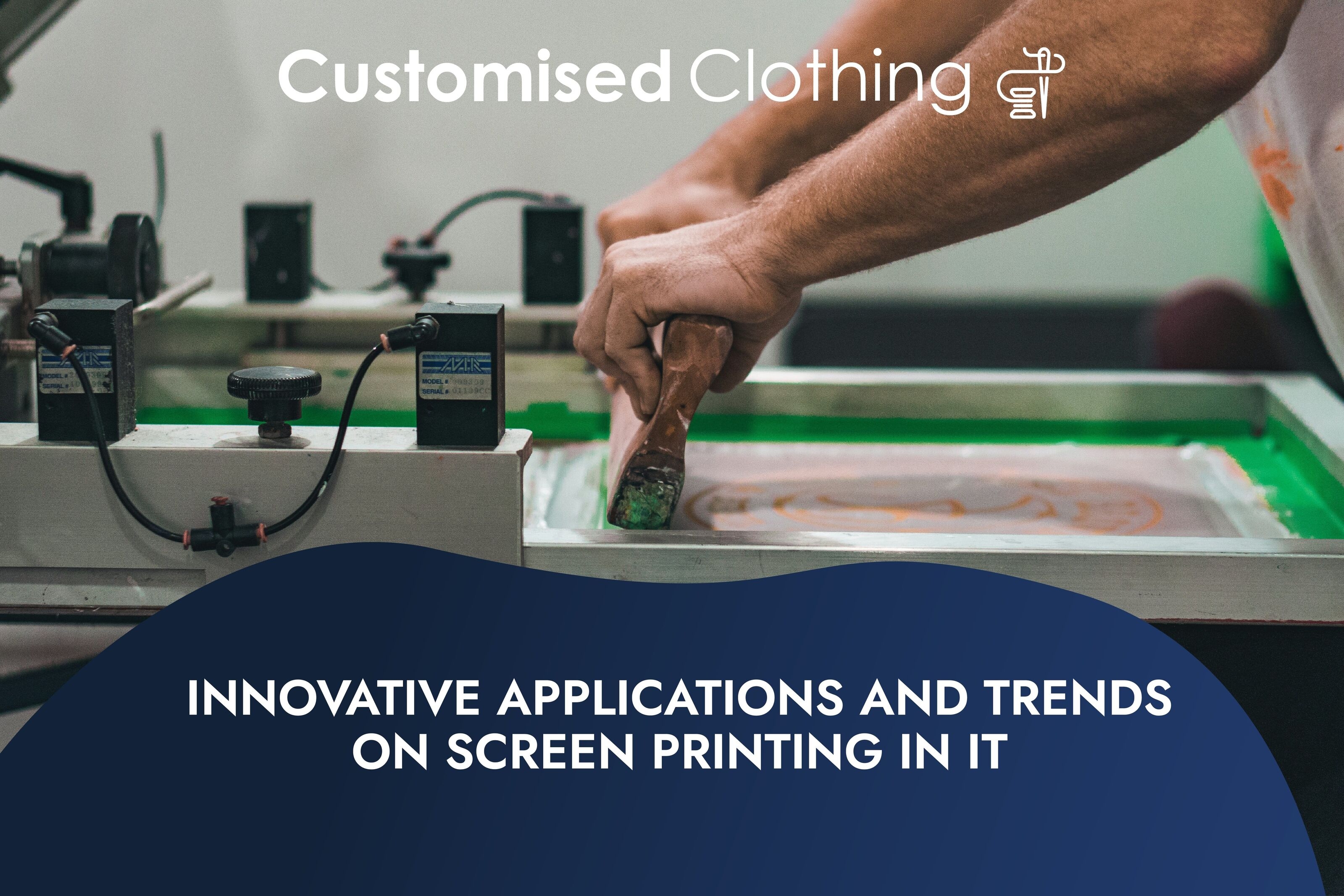T-shirts with custom printing have become essential for marketing, style, and self-expression. The printing business has revolutionised due to the advancement of printing technology, including Direct-to-Garment (DTG) printing and screen printing. These technologies have found creative uses in the Information Technology (IT) industry, expanding the possibilities for utility, branding, and creativity beyond fashion.
The Rise of Personalised T-Shirts
T-shirts with custom printing have moved from being specialist goods to becoming popular fashion accessories. The introduction of printing technology has fueled this shift by simplifying and lowering the cost of producing bespoke, high-quality clothing. Custom printed T-shirts are used for many different things these days, such as:

- Personal Expression: Through distinctive designs, people can display their hobbies, personalities, and worldviews.
- Marketing and Promotion: Companies utilise personalised T-shirts as advertising aids to raise consumer awareness of and interest in their brands.
- Celebrations & Activities: Personalised T-shirts are a hit at charity marathons, corporate retreats, family reunions, and sporting activities.
DTG Printing: Accuracy and Adaptability
Direct-to-garment (DTG) printing is an innovative method that uses inkjet technology to print directly onto fabric. There are various benefits to this technique:
- High-Resolution Prints: DTG printers are perfect for intricate patterns and photographic prints since they can generate detailed pictures in a broad colour spectrum.
- Flexibility: DTG offers customers who require restricted numbers or unique designs flexibility by being appropriate for small runs and single-piece purchases.
- Advantages for the Environment: Water-based inks used in DTG printing are less toxic to the environment than typical plastisol inks used in screen printing.
The DTG Printing Process
There are multiple steps in the DTG printing process:
- Design Preparation: Using graphic design tools, the design is made ready for printing.
- Pre-Treatment: To guarantee the ink sticks to the cloth effectively, the T-shirt is pre-treated with a unique solution.
- Printing: The design is printed directly onto the fabric when the T-shirt is placed into the DTG printer.
- Curing: To set the ink and guarantee durability, heat is applied to the printed T-shirt.
Screen Printing: Combining Innovation and Tradition
One of the earliest printing techniques, screen printing, is still widely used because it is adaptable and affordable for large quantities. This technique entails making a stencil or screen and applying layers of ink to the fabric using it.

Benefits of Screen Printing
- Durability: Designs printed on screen are incredibly resilient and do not fade even after several washings.
- Cost-Effectiveness: Screen printing is less expensive than DTG printing for large orders.
- Versatility: Screen printing can be applied to cotton, polyester, and mixes.
Process for Screen Printing
The following steps are involved in the screen printing process:
- Making a Screen: To create a screen, cover a mesh with a light-sensitive emulsion, expose it to UV light, and then cover it with the design. A stencil is formed when the exposed regions solidify, and the unexposed areas are removed by washing.
- Setting up: The T-shirt is put on a printing press, and the cloth is lined up with the screen.
- Application of Ink: Ink is smeared over the screen and pushed through the stencil onto the fabric by using a squeegee.
- Curing: Heat is used to cure the printed T-shirt to set the ink.
Technological Trends in Screen Printing
To satisfy the needs of contemporary customers and businesses, new technologies and methods are constantly being developed in the screen printing industry. The following are some significant developments in screen printing technology:
Environmentally Sustainable Printing
Eco-friendly printing techniques are becoming increasingly popular as environmental concerns increase. Screen printing is adjusting to this trend by utilising sustainable materials, biodegradable emulsions, and water-based resins. Customers who care about the environment will be drawn to these eco-friendly solutions, which lessen the adverse effects of screen printing on the environment.
Printing with Digital Hybrid Technology
Hybrid printing methods, which combine the advantages of digital and screen printing, are becoming increasingly popular. These methods create unique effects, like metallic inks, textures, and finishes, using screen printing and digital printers to print intricate designs. This hybrid method allows for more creativity and flexibility when printing personalised T-shirts.
Efficiency and Automation
Screen printing is becoming more accurate and efficient because of automation advancements. Automated screen printing machines generate larger volumes at a consistent quality, decreasing labour expenses and production times. This automation also makes accurate printing of increasingly elaborate and sophisticated designs possible.
The IT Industry’s Future for Personalised T-Shirts
When the IT sector and custom-printed T-shirts converge, there are numerous chances for innovation. As technology develops, we anticipate seeing even more inventive and valuable uses of screen printing and DTG printing in IT.

Innovative Textiles
One area that shows promise for growth is the development of smart textiles, which are fabrics that contain sensors and electronic components. These materials will be made possible via screen printing, which will allow electronics to be seamlessly incorporated into daily clothes. Possible uses consist of:
- Medical Monitoring: By continuously tracking a patient’s health, innovative textiles can give medical professionals critical information.
- Athletic Performance: Wearing innovative apparel that monitors key performance indicators like heart rate, muscle activation, and mobility can help athletes.
Customisation and Tailoring
The capacity to produce personalised T-shirts with distinctive patterns and features will be more and more crucial as consumer demand for customised goods rises. More personalisation choices will be possible thanks to developments in printing technology, including:
- On-Demand Printing: Customers can use DTG printing to create and order personalised T-shirts quickly and with high-quality results.
- Interactive Features: Touch-sensitive regions and integrated LEDs are examples of interactive components that may be added to custom T-shirts to provide customers additional opportunities to express themselves and interact with digital material.
Conclusion
Advances in DTG and screen printing have led to the growth of custom-printed T-shirts, creating new avenues for marketing, creativity, and self-expression. These technologies are being used in the IT industry to build interactive user interfaces, wearable technology, and better branding. The future of custom-printed T-shirts in IT appears bright as screen printing continues to advance with trends like automation, digital hybrid printing, and eco-friendly methods.


